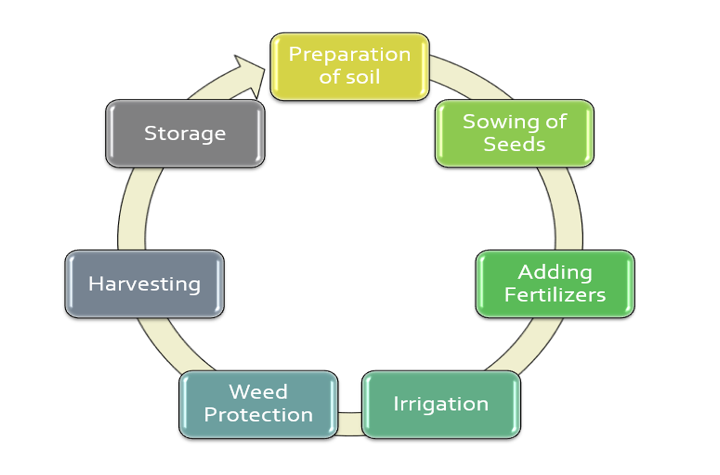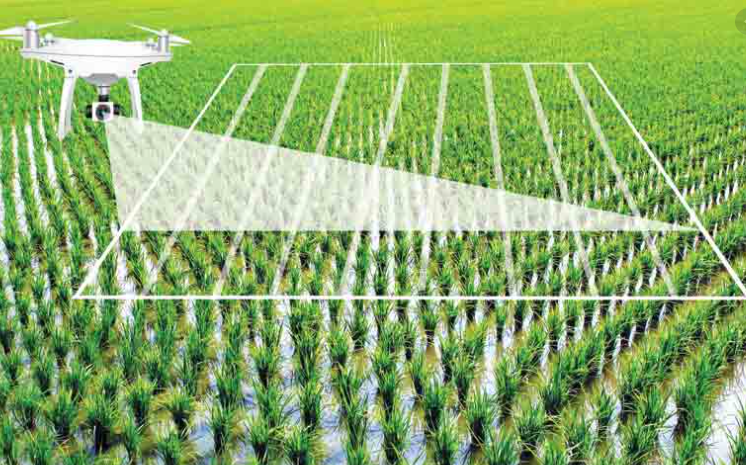Introduction
The global population is growing, expected to reach 10 billion by 2050, putting pressure on agriculture to produce more food. Two options to address food shortages have emerged: using more land for large-scale farming or using technology to enhance productivity on existing farmland. Modern agriculture faces limited land, labor shortages, climate change, and soil fertility issues. This has led to various innovative developments in farming. Technology keeps advancing each season to improve efficiency and harvests. Yet, many farmers and agribusinesses miss out on the benefits of artificial intelligence in agriculture.
We’re at beginning of a golden age of AI. Recent advancements have already led to invention that previously lived in the realm of science fiction – and we have only scratched the surface of what’s possible
Jeff Bezos, Amazon CEO
This article was published as a part of the Data Science Blogathon.
Table of contents
What is the Role of AI in Agriculture?
Artificial intelligence is based on the principle that human intelligence can be defined in a way that a machine can easily mimic it and execute tasks, from the simplest to those that are even more complex. The goals of artificial intelligence include learning, reasoning, and perception.
Some examples, vision-recognition systems on self-driving cars, in the recommendation engines that suggest products you might like based on what you bought in the past, speech, and language recognition of the Siri virtual assistant on the Apple iPhone.
AI is making a huge impact in all domains of the industry. Every industry looking to automate certain jobs through the use of intelligent machinery. And a good Artificial Intelligence Course Online is all you need to break into any industry. Even Agriculture!
Agriculture and farming are one of the oldest and most important professions in the world. It plays an important role in the economic sector. Worldwide, agriculture is a $5 trillion industry.
As the world population is increasing due to which land water and resources becoming insufficient to continue the demand-supply chain. So, we need a smarter approach and become more efficient about how we farm and can be most productive
Lifecycle of Agriculture
We can divide the Process of Agriculture into different parts:

Preparation of Soil
It is the initial stage of farming where farmers prepare the soil for sowing seeds. This process involves breaking large soil clumps and remove debris, such as sticks, rocks, and roots. Also, add fertilizers and organic matter depend on the type of crop to create an ideal situation for crops.
Sowing of Seeds
This stage requires taking care of the distance between two seeds, depth for planting seeds. At this stage climatic conditions such as temperature, humidity, and rainfall play an important role.
Adding Fertilizers
To maintain soil fertility is an important factor so the farmer can continue to grow nutritious crops and healthy crops. Farmers turn to fertilizers because these substances contain plant nutrients such as nitrogen, phosphorus, and potassium. Fertilizers are simply planted nutrients applied to agricultural fields to supplement the required elements found naturally in the soil. This stage also determines the quality of the crop
Irrigation
This stage helps to keep the soil moist and maintain humidity. Underwatering or overwatering can hamper the growth of crops and if not done properly it can lead to damaged crops.
Weed Protection
Weeds are unwanted plants that grow near crops or at the boundary of farms. Weed protection is important to factor as weed decreases yields, increases production cost, interfere with harvest, and lower crop quality
Harvesting
It is the process of gathering ripe crops from the fields. It requires a lot of laborers for this activity so this is a labor-intensive activity. This stage also includes post-harvest handling such as cleaning, sorting, packing, and cooling.
Storage
This phase of the post-harvest system during which the products are kept in such a way as to guarantee food security other than during periods of agriculture. It also includes packing and transportation of crops.
Challenges faced by farmers by using traditional methods of farming
Listing down general challenges that exist in the agricultural domain.
- In farming climatic factors such as rainfall, temperature and humidity play an important role in the agriculture lifecycle. Increasing deforestation and pollution result in climatic changes, so it’s difficult for farmers to take decisions to prepare the soil, sow seeds, and harvest.
- Every crop requires specific nutrition in the soil. There are 3 main nutrients nitrogen(N), phosphorous(P) and potassium(K) required in soil. The deficiency of nutrients can lead to poor quality of crops.
- As we can see from the agriculture lifecycle that weed protection plays an important role. If not controlled it can lead to an increase in production cost and also it absorbs nutrients from the soil which can cause nutrition deficiency in the soil.
Applications of Artificial Intelligence in Agriculture
The industry is turning to Artificial Intelligence technologies to help yield healthier crops, control pests, monitor soil, and growing conditions, organize data for farmers, help with the workload, and improve a wide range of agriculture-related tasks in the entire food supply chain.

Use of Weather Forecasting
With the change in climatic condition and increasing pollution it’s difficult for farmers to determine the right time for sowing seed, with help of Artificial Intelligence farmers can analyze weather conditions by using weather forecasting which helps they plan the type of crop can be grown and when should seeds be sown.
Soil and Crop Health Monitoring System
The type of soil and nutrition of soil plays an important factor in the type of crop is grown and the quality of the crop. Due to increasing, deforestation soil quality is degrading and it’s hard to determine the quality of the soil.
A German-based tech start-up PEAT has developed an AI-based application called Plantix that can identify the nutrient deficiencies in soil including plant pests and diseases by which farmers can also get an idea to use fertilizer which helps to improve harvest quality. This app uses image recognition-based technology. The farmer can capture images of plants using smartphones. We can also see soil restoration techniques with tips and other solutions through short videos on this application.
Similarly, Trace Genomics is another machine learning-based company that helps farmers to do a soil analysis to farmers. Such type of app helps farmers to monitor soil and crop’s health conditions and produce healthy crops with a higher level of productivity.

Analyzing Crop Health by Drones
SkySqurrel Technologies has brought drone-based Ariel imaging solutions for monitoring crop health. In this technique, the drone captures data from fields and then data is transferred via a USB drive from the drone to a computer and analyzed by experts.
This company uses algorithms to analyze the captured images and provide a detailed report containing the current health of the farm. It helps the farmer to identify pests and bacteria helping farmers to timely use of pest control and other methods to take required action
Precision Farming and Predictive Analytics
AI applications in agriculture have developed applications and tools which help farmers inaccurate and controlled farming by providing them proper guidance to farmers about water management, crop rotation, timely harvesting, type of crop to be grown, optimum planting, pest attacks, nutrition management.
While using the machine learning algorithms in connection with images captured by satellites and drones, AI-enabled technologies predict weather conditions, analyze crop sustainability and evaluate farms for the presence of diseases or pests and poor plant nutrition on farms with data like temperature, precipitation, wind speed, and solar radiation.
Farmers without connectivity can get AI benefits right now, with tools as simple as an SMS-enabled phone and the Sowing App. Meanwhile, farmers with Wi-Fi access can use AI applications to get a continually AI-customized plan for their lands. With such IoT- and AI-driven solutions, farmers can meet the world’s needs for increased food sustainably growing production and revenues without depleting precious natural resources.
In the future, AI will help farmers evolve into agricultural technologists, using data to optimize yields down to individual rows of plants
Agricultural Robotics
AI companies are developing robots that can easily perform multiple tasks in farming fields. This type of robot is trained to control weeds and harvest crops at a faster pace with higher volumes compared to humans.
These types of robots are trained to check the quality of crops and detect weed with picking and packing of crops at the same time. These robots are also capable to fight with challenges faced by agricultural force labor.
AI-enabled System to Detect Pests
Pests are one of the worst enemies of the farmers which damages crops.
AI systems use satellite images and compare them with historical data using AI algorithms and detect that if any insect has landed and which type of insect has landed like the locust, grasshopper, etc. And send alerts to farmers to their smartphones so that farmers can take required precautions and use required pest control thus AI helps farmers to fight against pests.
Conclusion
Artificial Intelligence in agriculture not only helping farmers to automate their farming but also shifts to precise cultivation for higher crop yield and better quality while using fewer resources.
Companies involved in improving machine learning or Artificial Intelligence-based products or services like training data for agriculture, drone, and automated machine making will get technological advancement in the future will provide more useful applications to this sector helping the world deal with food production issues for the growing population.




